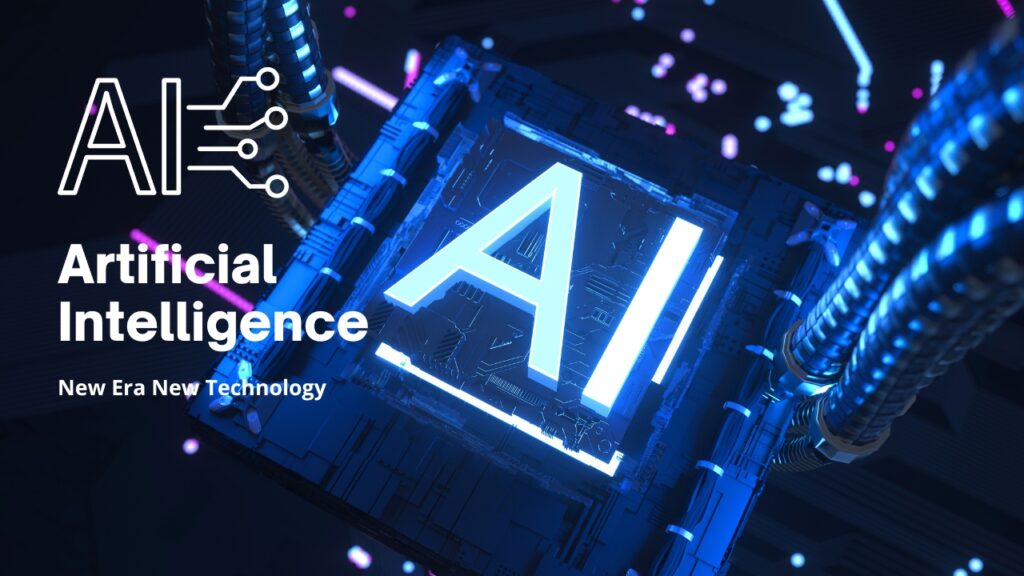When you converse about AI or Artificial Intelligence, you are discussing the progress and capability of a smart machine system to do both complex and simple tasks, which are normally done by human beings. Also, some intelligent systems can exhibit behavioral as well as emotional reactions, which are human.
I’m a firm believer in the power of human creativity and innovation. Yet, I also recognize that we humans are limited by our natural abilities and intelligence. That’s why when I read about artificial intelligence (AI) it fascinates me to no end! AI is essentially an advanced form of computing that mimics cognitive functions like learning, reasoning, problem-solving skills, and perception; all things that we humans have done since day one.

Table of Contents
What is Artificial Intelligence?
Artificial Intelligence (AI) is a branch of computer science that focuses on creating intelligent machines that can perform tasks that typically require human intelligence. AI is based on the idea that machines can be designed to think and learn like humans, and can be programmed to perform complex tasks such as speech recognition, decision-making, and problem-solving. AI is a rapidly growing field, with new advancements being made every day.
But what makes AI so different from other forms of technology? Well for starters, AI doesn’t need a human programmer to tell it how or what to do. It will learn on its own through experience – making mistakes as it learns and adapting accordingly – until it becomes more intelligent than any human could ever be…
When you think about what artificial intelligence is, it may be hard to know where to start. Artificial Intelligence, or AI for short, is a system that can carry out tasks by following a set of rules and instructions. For example, if someone asks an artificially intelligent car how many miles are in 1 kilometer, the car would use its pre-programmed knowledge and calculate the answer using algorithms.
4 Functionality-Based Types of Artificial Intelligence
Reactive Machines
Reactive Machines are like the kids who have just started learning, the most basic type of AI, but by no means less intriguing. Picture this: an AI that doesn’t need to be trained or fed with data. It doesn’t store memories for future use but is capable of performing highly complex tasks. Sounds impossible? Well, welcome to the world of Reactive Machines!
Picture this: Reactive Machines are like expert chess players who don’t rely on past games or strategize for future ones. They just look at the board as it is, understand the current positions of the pieces, and make the best possible move.
This ability to make sophisticated decisions based purely on real-time data is what sets Reactive Machines apart. They don’t need to learn from the past or plan for the future – they’re all about maximizing efficiency at the moment.
A fantastic example of this AI is Deep Blue, a chess-playing machine that outsmarted Grand Master Gary Kasparov.
These AIs, though limited, can handle intricate tasks in real-time, based purely on existing rules and scenarios. They’re a testament to the fact that AI isn’t always about learning from the past – sometimes, it’s about being superbly efficient in the present.
But don’t let the word ‘basic’ fool you. Reactive Machines may not boast the learning capabilities of some of their more advanced AI counterparts, but they can handle highly complex tasks with impressive precision.
Their unique approach to AI – reacting to the present rather than learning from the past or planning for the future – allows them to excel in specific areas that require real-time decision-making.
Limited Memory
Limited Memory AI is what we could call the class 2 category of AI applications. Imagine a machine capable of learning from data, retaining that information for a limited time, and using it to make informed decisions. Sounds like a smart teenager, right?
The best example? A self-driving car. It gets fed data – the speed and direction of other vehicles, traffic light signals, lane markings, road curves, and much more. It absorbs this info, learns from it, and then applies it to navigate the roadways efficiently.
This kind of AI is about adaptation, making real-time decisions based on recently acquired data.
Theory of Mind
This AI type is the leap toward machines that can understand human thoughts, emotions, and reactions. What if our devices could perceive our emotions and respond accordingly?
In the rapidly evolving landscape of AI, the Theory of Mind stands as a massive leap forward. This type of AI is not about processing power, data analysis, or predictive models. Instead, it’s about AI developing an ‘understanding’ of human psychology. By recognizing our emotions and responses, these AI systems aim to interact with us more effectively and empathetically. It’s about transforming AI from mere tools into interactive and understanding partners.
For instance, consider a Theory of Mind AI integrated into a learning app. It could understand when a student is struggling with a concept and adapt its teaching methods accordingly, or sense when a user is getting frustrated and respond with a calming interaction. The potential for genuinely personalized experiences is enormous, bridging the gap between technology and human emotion.
This isn’t about smart gadgets tossing out automated responses based on pre-programmed algorithms. It’s about an AI understanding the user’s state of mind and responding in a human-like way. This kind of empathy could revolutionize how we interact with technology, making it more personal and responsive to our emotional needs.
The idea of an empathetic AI might seem a bit far-fetched at the moment, but it’s closer to reality than you might think. Companies around the world are already working on technology that can read and interpret human emotions, aiming to make our interactions with machines more natural and meaningful.
The journey toward the Theory of Mind in AI represents an exciting turning point in technology. It’s where we begin to see AI not just as tools or assistants, but as entities capable of understanding and interacting with us on a much deeper level. It’s a big step, yes, but one that promises to reshape the AI landscape entirely.
Self-Awareness
We’re talking about machines that not only understand human emotions but also possess a degree of self-awareness. It’s an idea that feels more like science fiction than science fact, but it’s a concept that AI researchers are keenly exploring.
While the idea of self-aware machines may sound more like the plot of a Hollywood blockbuster, it’s a concept that’s very much under investigation in AI labs around the world. The aim is to create AI that’s not just able to understand and mimic human emotions but also to have a sense of its own existence. It’s about building machines that don’t just react to the world, but understand their own reactions and emotions.
Picture this scenario: A self-driving car doesn’t just register that a car is honking at it from behind; it understands the frustration or urgency behind that honk. It might then adjust its behavior, not merely because of a pre-set rule or command, but because it has a ‘sense’ of the other driver’s emotional state.
This level of AI, where machines demonstrate self-awareness and emotional comprehension, is currently beyond our grasp. However, the thought of its existence represents the pinnacle of what many AI researchers are striving to achieve: the creation of machines that are truly conscious, aware, and capable of understanding both themselves and the world around them.
Achieving self-awareness in AI would be a quantum leap for technology. It could lead to artificial beings that empathize with us, understand us, and adapt to us in ways that are currently the domain of science fiction. But it’s more than that; a self-aware AI would also have a sense of its own ‘self’, an understanding of its motivations, desires, and intentions.
In a way, Self-Awareness AI is a fascinating mirror to our own human journey. Just as we’ve striven to understand our place in the universe, our innermost thoughts, and our deepest emotions, we’re now trying to impart those same qualities onto our creations.
While the creation of Self-Awareness AI is currently aspirational, the quest to achieve it represents a thrilling intersection of technology, philosophy, psychology, and even spirituality.
We are not just redefining what machines can do, but also pushing the boundaries of what it means to be ‘aware’. The journey to self-aware AI is not just a technological challenge, but a philosophical adventure into the very essence of consciousness itself.




